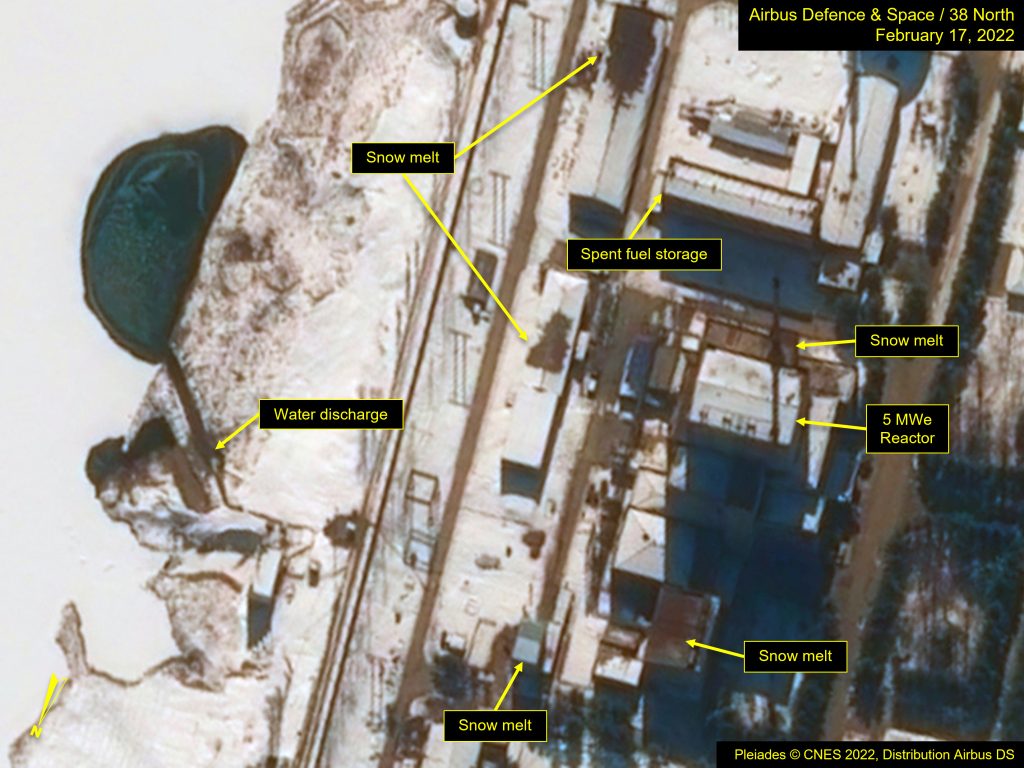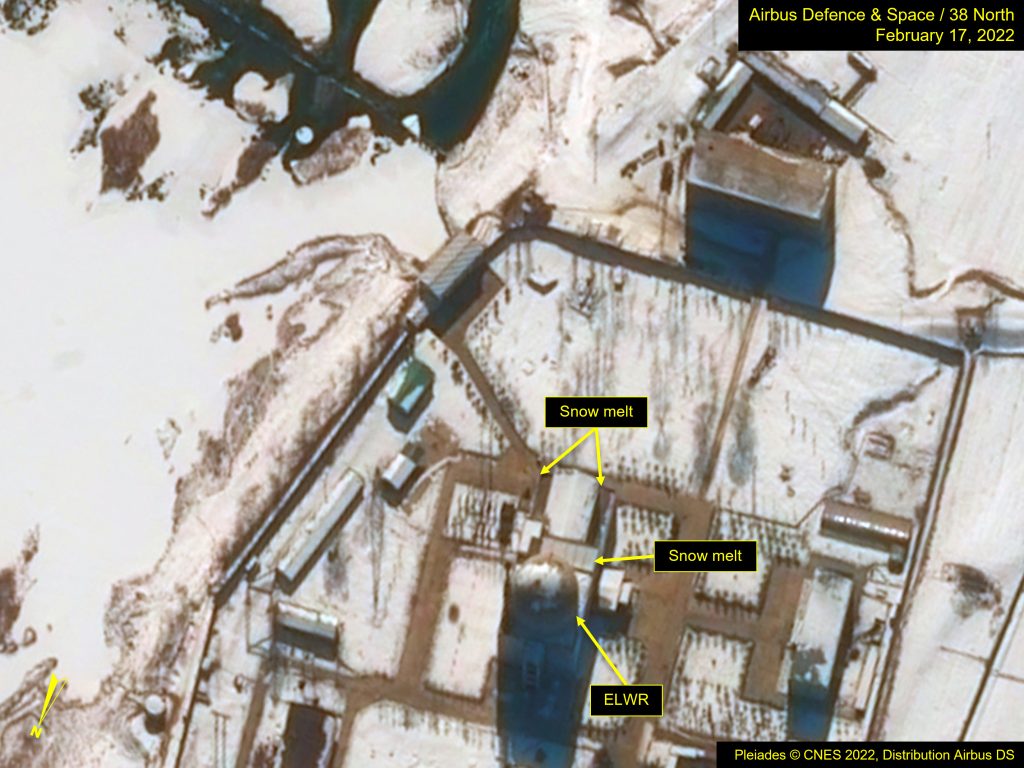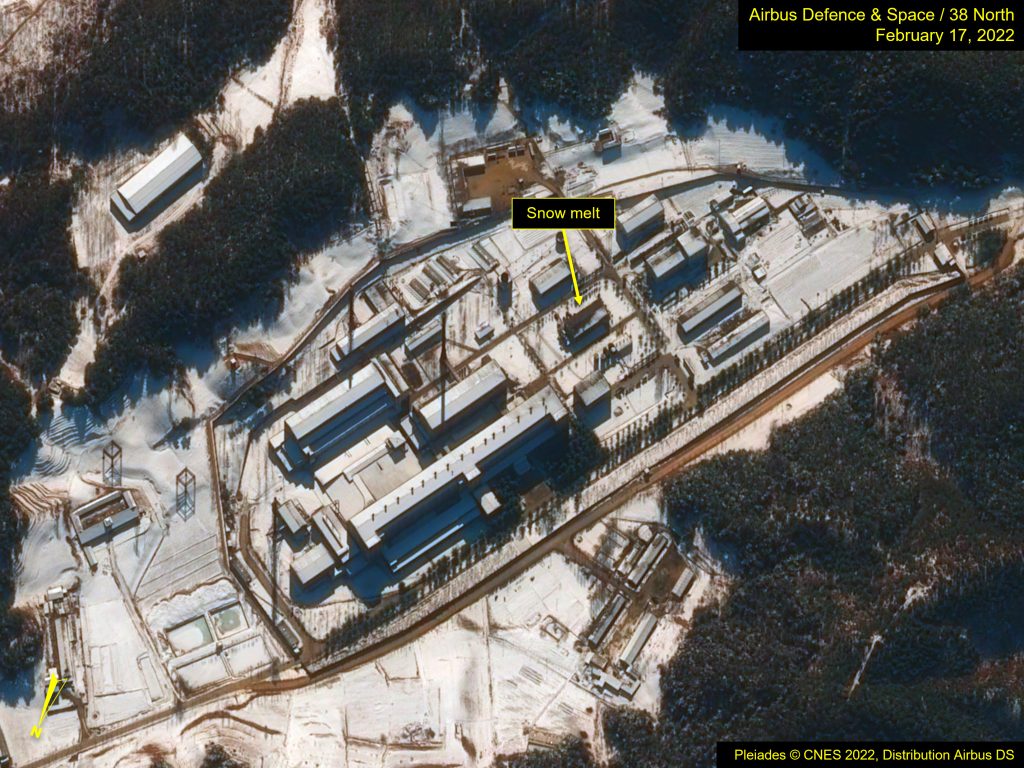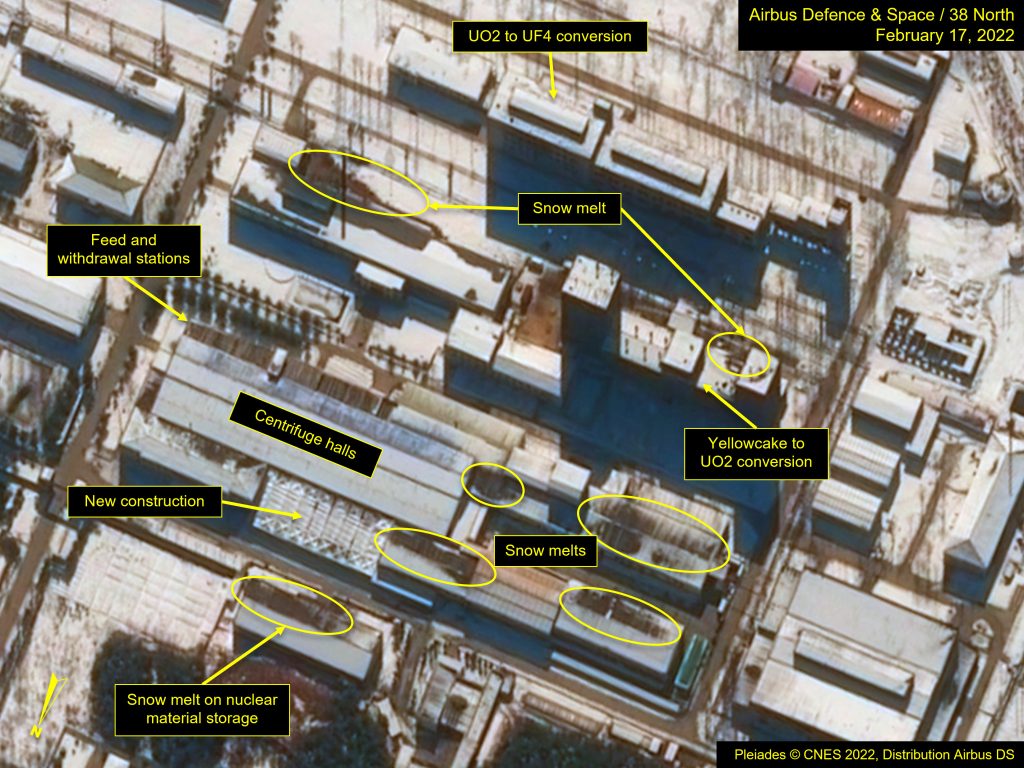North Korea’s Yongbyon Nuclear Center: In Full Swing
Recent commercial satellite imagery of North Korea’s Yongbyon Nuclear Scientific Research Center indicates ongoing production of fissile material—both plutonium and enriched uranium—which is necessary for Kim Jong Un to achieve his stated nuclear development goals, as well as evidence of operations at each of the major facilities around the nuclear research center.
Activity has been increasing at Yongbyon over the past few years, especially after the failed Hanoi Summit. New construction of support buildings throughout the complex was started more than a year ago. Last year, activity at the Radiochemical Laboratory (RCL) complex suggested reprocessing was underway, followed by the restarting of the 5 MWe Reactor. These activities, as well as the gradual expansion and evident occupation of personnel housing over the past few years, all suggest that the complex is primed for expansion.
5 MWe Reactor
The 5 MWe Reactor, which was restarted last summer after a two-year hiatus, appears to still be operating, as evidenced by recent snow melt at the reactor building, adjacent turbine hall and several support buildings. In addition, signatures, such as occasional steam emissions and the steady, warm water discharge into the Kuryong River, have been observed since last year.
Despite this period of operations, there are no signs to date of preparations for the first core discharge, such as increased vehicles and activity around the spent fuel storage building. In fact, there is no snow melt on the building roof, suggesting little to no activity is taking place inside.
In the past, North Korea has maximized the production of plutonium by running the reactor up to two years before refueling. However, the announced plans to further develop miniaturized nuclear warheads, which requires plutonium with an isotopic composition of more than 95 percent (Pu-239), can best be achieved by shorter irradiation campaigns and partial core replacements. Therefore, instead of a two-year cycle, refueling is likely to be carried out more frequently and can be done without shutting down the reactor.
Figure 1. Overview of 5 MWe Reactor area with visible snow melt and water discharge.

Experimental Light Water Reactor (ELWR)
Work continues to complete the ELWR. Snow melt on the roof of the turbine building suggests possible testing activities in the areas that house the secondary cooling systems of the reactor continue. Some cooling test activities were also reported in July 2021. This, together with the construction of the cooling water pump house and electric switchyards, indicate that the reactor might be approaching its inauguration.
Figure 2. Overview of ELWR with visible snow melt.

Radiochemical Laboratory
The Thermal (Steam) Plant, supporting the RCL, operated for about five months last year, suggesting a reprocessing campaign had been carried out. Since then, little activity has been observed at this facility. However, while there have been no signs of preparations for a new reprocessing campaign, imagery does show snow melt on the building that prepares chemicals for the reprocessing plant. This is a normal support activity as chemicals are needed for the plant and its waste storage even when no reprocessing operations are underway.
Figure 3. Overview of Radiochemical Laboratory.

Uranium Enrichment Plant (UEP)
Snow melt is observed on several support buildings for the UEP. In particular, snow melt at the uranium hexafluoride (UF6) feed and withdrawal sections of the plant suggests that the facility is likely operating. Progress made in the construction of the new building remains unclear.
Figure 4. Overview of the Uranium Enrichment Plant and Uranium Conversion Plant with visible snow melt and new construction underway.

Uranium Conversion Plant
The plant converting yellowcake to uranium dioxide (UO2) has operated occasionally during past years. This suggests there has been a steady supply of feed material available for the old Fuel Rod Fabrication Plant, which fabricates fuel after conversion of UO2 to a uranium metal alloy for the 5 MWe Reactor.
There appear to be some activities at the possible fabrication plant for the ELWR. However, it is unknown where the required enriched UO2 is obtained. Judging from the size of the plant, it is possible that enriched UF6, obtained, for example, from the UEP, is converted to UO2 at this location.
Other Activity
The most recent imagery revealed a snow-blanketed Yongbyon complex, but with clues to ongoing operations. This included snow melt on certain building roofs and snow removal from the roadways, indicating ongoing activity throughout the complex. In particular, snow melt is observed at installations such as the Institute of Radiochemistry and Isotope Production Plant (IPP, or Radioisotope Production Plant), but the scope of the work carried out at these facilities remains unknown.
There are also three large buildings under construction in the research and development (R&D) area, one of which may be in operation, while work on the other two is proceeding slowly.
Conclusion
At this stage, the activities observed in Yongbyon indicate ongoing fissile material production as well as the groundwork for further expansion. If the ELWR becomes operational, as it appears to be nearing completion, North Korea’s plutonium production capacity could increase substantially. However, this increased production capacity will also require modifications to the RCL to increase its reprocessing capacity. To date, no signs of substantial work in this area have been observed.
